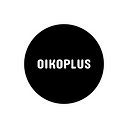We help a Brussels city quarter to define its role in a self-determined way.
For some time now, this fictitious city map of a typical European city has been circulating on the Internet. The map is something like a caricature of a city map. It was created in 2018 by the artist Malachi Ray Rempen. As with every good caricature, it alludes to reality and is humorously overdrawn. The city map of every European city alludes to the common features of European metropolises, to the tourist patterns that can be observed in them, to the patterns in the development of their inner cities, to gentrification, economic structural change, commercialization, etc.
In this way, the city map of every European city also alludes to areas that the SYNCITY project deals with on the basis of the Cureghem district of Brussels. Where would Cureghem be within this caricature of a city map, and where could it be in ten years? As an industrial district, Cureghem would probably have to be located somewhere on the edge of the caricature. But would Cureghem have to be located in the near future where, according to the cartoon, hipsters live in cheap housing? Or where faceless office space is located? Or simply outside the cartoon, in a part of Brussels that is rather uninteresting for tourist and caricature purposes?
These are questions that the SYNCITY project approaches — even if the project is not, of course, about locating the Cureghem district within the caricature in question. The caricature serves to illustrate processes of European urban development in a striking and funny way — with a cynical eye. SYNCITY serves to test and explore participatory processes in the context of urban development, to find out how much the development of a district can be influenced by its inhabitants and whether they are interested in it at all — with an analytical view.
So, to stay in the image of caricature, SYNCITY is about asking in different ways where Cureghem and its residents see themselves on the map of any European city, and where they would like to see Cureghem in the near future.
Of course, this is not the only question that determines where to place Cureghem, within the framework of the caricature. It is decided by very different constellations of interests and influence, of money and power, which are reflected in urban planning and architecture. Making the different demands on Cureghem as an urban space visible and understandable — that is the goal of SYNCITY. And since Cureghem is a large urban district, three different locations within the district were selected for this purpose. These are the Abbattoir d’Anderlecht, the largest inner-city abattoir in Europe that is still in operation, Rue Dr de Meersman, in the middle of which there is a church and which could actually also be a square, and Chaussee de Mons, a shopping street in the heart of the district.
At these locations the project team would like to get in touch with the people of Cureghem to discuss their demands for urban space in Urban Labs. This is about the big picture, but also about specific aspects, such as how to deal with garbage in public space. Smoldering spatial conflicts are to be made visible in order to make them accessible for public discussion. SYNCITY is an open process. It remains to be seen what the project will result in. Ideally, SYNCITY will make it easier for as many people as possible to tell where they would locate Cureghem on a map of any European city — in a humorous sense; and where they would see Cureghem within Brussels — in a very real sense.
The project SYNCITY — Synergetic Cities for Europe receives funding from the JPI Urban Europe program.
